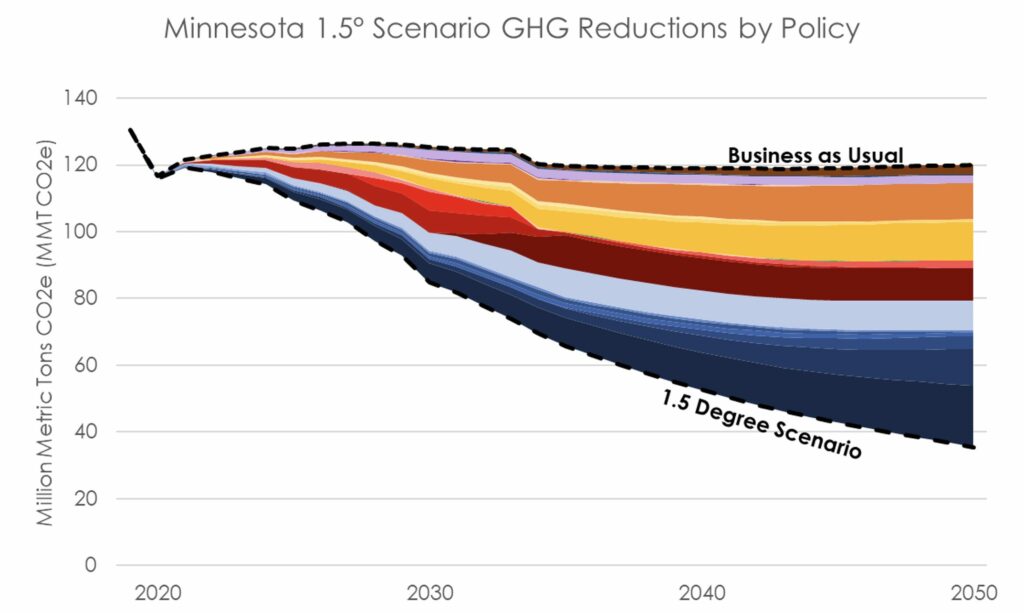New research using the Minnesota Energy Policy Simulator developed by Energy Innovation and RMI evaluates the state’s climate policies, finding they could reduce emissions 8 percent, but fall short of achieving the Minnesota’s Next Generation Economy Act’s goals. A proposed 100 percent clean energy goal could cut statewide emissions 20 percent by 2050, but a broader set of climate policies is needed to put Minnesota on the IPCC’s recommended pathway to limit warming to 1.5° Celsius. Implementing additional policies across the transportation, buildings, industrial, land, and agricultural sectors can transition the state to a low-carbon economy while generating significant economic and health benefits. By 2050, the policies in this package would reduce emissions more than 75 percent, create more than 39,000 job-years, and add $11 billion to the state’s economy per year.
Minnesota Energy Policy Simulator Insights: Current Emissions Trajectory, 1.5°C Scenario
New modeling using the Minnesota Energy Policy Simulator finds a newly proposed clean energy standard would cut statewide emissions nearly 20 percent by 2050, but strategic policies in the building, industry, and transportation sectors would put Minnesota on a 1.5° pathway, generate 39,000 job-years, and increase state GDP by more than $11 billion per year.

